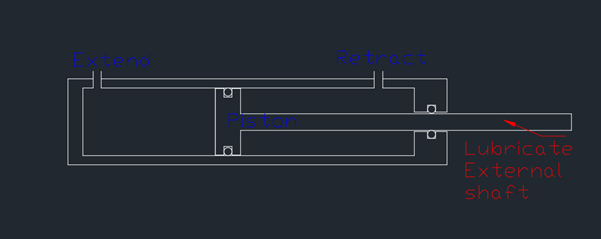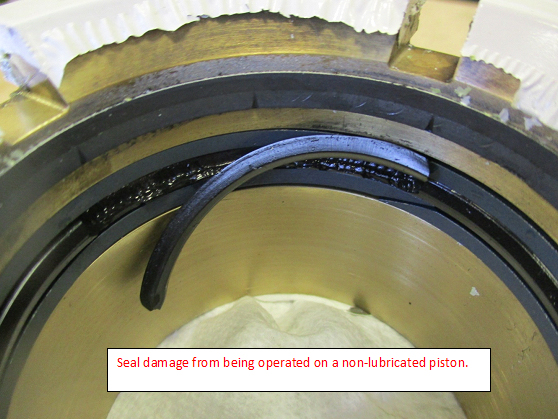
Most aircraft depend on hydraulic systems for essential functions like actuation, braking, and shock absorption. The integrity of internal seals is paramount for these systems to operate correctly, as they contain the hydraulic fluid, ensuring proper function and preventing leaks. External moving parts, such as actuator pistons and shock strut tubes, often come into direct contact with these seals.
For seals to perform effectively, these external moving parts must remain clean, lubricated, and free of contamination and damage. Many aircraft maintenance schedules require regular inspection, cleaning, and lubrication of these components. It's crucial that these externally moving parts, which are typically chrome-plated, are lubricated with either the same fluid used in the hydraulic system or a lubricant specified by the aircraft maintenance manual.
 Why Lubrication Matters for Seal Longevity
Why Lubrication Matters for Seal LongevityA thin film of lubricant on the chrome portion of these hydraulic devices is necessary to prevent damage to the seals they interact with. While most seals are designed to allow a slight amount of leakage for self-lubrication, many seal failures can be attributed to improper lubrication during installation and initial actuation.
Even if the maintenance manual doesn't explicitly require initial lubrication, components from inventory or repair shops might not be adequately lubricated due to prolonged storage or handling. Therefore, it's highly recommended to follow proper lubrication procedures before operating freshly installed components. Never actuate a hydraulic unit that isn't properly lubricated.
Landing gear components are particularly vulnerable to debris and contamination due to their exposure to the elements. We recommend wiping down the chrome portion of landing gear struts and actuators before each flight, whenever feasible, to help maintain seal integrity and overall system reliability.
December 2025
November 2025
October 2025
June 2025
June 2025